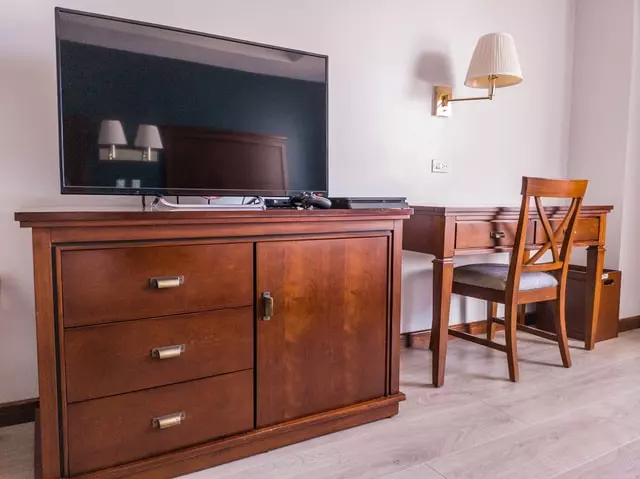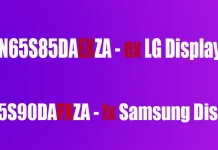Sony TV is one of the top-selling TVs today that is known not only for its quality but also for its long and thorny brand history. However, as soon as people buy their TVs, after the euphoria of the purchase they begin to wonder how to configure the TV correctly. In fact, the process may seem difficult for those who don’t often buy TVs and tune them manually.
In addition to the process of adjusting the picture quality and entering the TV from demo mode, everyone has to deal with the setting of the input source. And it’s desirable to know this point not only for those lucky people who have just bought a TV. You need to properly set the input source on Sony TV in various other cases as well.
What does input source mean
TVs have various interfaces for connecting external devices: USB, HDMI, VGA, etc. With their help, information from storage devices or external devices can be directly transmitted and processed and played back without the use of third-party AV equipment. The USB port can be used to connect flash drives, external hard drives, and sometimes smartphones, digital cameras, and video cameras for video, audio, or photo playback.
The HDMI interface is used to connect a computer, laptop, smartphone, and other gadgets to display the picture from the device on the TV screen – the latter, in fact, is used as a monitor. Today’s models of TV provide different interfaces, but most often users are interested in VGA as an analog of HDMI when connecting a laptop or computer and DVI when pairing a TV and camcorder, or PC. VGA connectors can still be used to pair devices in the absence of HDMI and USB on older models.
To connect different devices to your Sony TV, as well as to any other TV, you just need to select the correct cable for the appropriate connector and connect them. Then it remains only to deal with the settings in the TV, which should detect the input source and display the appropriate picture.
Read Also:
- How to turn off subtitles on Sony TV
- How to turn on Demo Mode or Store Mode on Sony TV
- How to watch Hulu on Sony TV
How to switch input sources on Sony TV
So, you’re going to set up your TV and connect it to a set-top box or any other device to broadcast the image, but you don’t know how to do it correctly? It’s very simple in fact. All you need is a remote control. Here’s how to do it:
- Once you press the Input button, the top left of the screen will show the options available.
- The input options can vary with each model of Sony TV.
- The options on the screen can be toggled up and down using the arrows in the round wheel-like button with the OK at the center.
- Once you have scrolled to the choice of input you want.
- Press the OK button and the display will change to that screen.
That’s how you turn your TV into a device that you can not only watch as a source of public TV channels but also as a monitor for video gaming and simply as a decorative element with slideshows of beautiful photos and pictures.
How to switch input source on Sony TV without remote
Well, if you lost your remote and stopped working, then it’s time to think about buying an analog of the original – in fact, all remotes have the same principle and don’t differ much. However, you want to watch a movie now and the only way so far that won’t let you down is to use the keys on the panel of the TV itself.
- Press the power button when the TV is on.
- You’ll see a menu of actions in front of you. Use the power button to select the input function. For it, toggle it in the needed direction. If your button works a different way, then press it without holding to change an option.
- Press and hold the power button to go to the input menu.
- In the input menu, as before, use the stick to select the desired input.
- To confirm your selection, press and hold the power button.
In addition, you can use third-party apps – universal remote control emulators that will help you replace the remote control for a while. Most of these apps can be downloaded for free from Play Store or App Store.
What to do when TV display shows No Signal
What to do if there’s no signal on the TV? First, you need to diagnose the cause of the failure. You can do it yourself. Much will depend on the signal source: cable, digital, or satellite TV. Secondly, you need to fix the problem yourself or ask your provider for help. Now let’s analyze the most common causes of No signal. Sometimes the signal from the receiver doesn’t come due to hardware failure, and in some situations, the catalyst for the appearance of failure was a system error. Sometimes the quality of the signal is affected by external factors, especially weather conditions.
The most common reason that the TV doesn’t show certain or all channels is the presence of hardware failures of the equipment. Breakdowns in this category can be divided into three groups:
- Mechanical damage to the connecting cable.
- Breakage of a satellite dish or antenna.
- Receiver malfunction.
Now let’s consider all the malfunctions in more detail. Let’s start with problems with the cable. If the TV writes “No signal” or it’s very weak, because of which the channels are poorly displayed, then most likely the connection cable is damaged. Diagnosis involves a thorough check of all connectors, as well as the wire for breaks and other mechanical damage. Don’t forget that the quality of the signal is directly affected by the cable. Therefore, it’s very important to know how to choose the right cable.
Read Also:
- How to turn off ads on Sony TV
- How to get Sony TV out of Demo Mode or Store Mode
- How to reset Sony TV explained
What kinds of HDMI cables there are
HDMI stands for High Definition Multimedia Interface, an interface for high-definition multimedia playback. It’s used to transmit both video and audio content. You can use an HDMI cable to connect your TV or monitor to a game console, computer, laptop, set-top box, or any other accessory. This is useful for those who don’t want to be limited to watching over-the-air channels.
Currently, there are four popular types of HDMI cables on sale. Let’s find out how they differ from each other. We recommend that you look at the type of cable and not the version number. HDMI Standart cables support 720p or 1080i resolution at 60 Hz. The data transfer rate is up to 2.25 Gbps. They are suitable for connecting your TV to your console and watching HD content from it or from your computer.
However, the HDMI High-Speed version already supports playing 4K content, but only with a frequency of 30 Hz, and is also able to play 3D content in FHD resolution. Data transfer speed starts from 8 Gbit/s. It’s impossible not to mention HDMI Premium High Speed which is already able to play 4K content with a frequency of up to 60 Hz, as well as 3D content in 4K quality. They support HDR, and the data transfer speed increases up to 18 Gbit/s. Although the latter is inferior to HDMI Ultra High Speed, with which you can play content in 8K at 60 Hz or 4K at 120 Hz, the data transfer rate through them is 48 Gbps.






